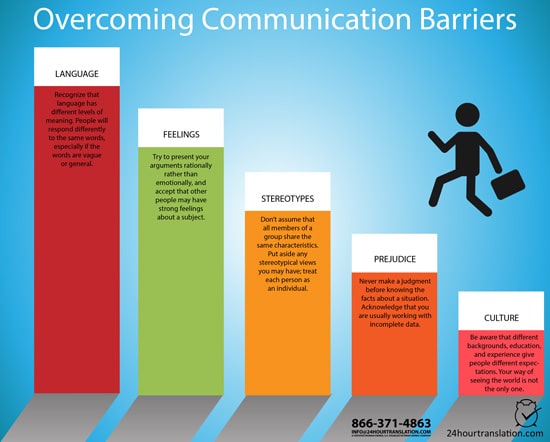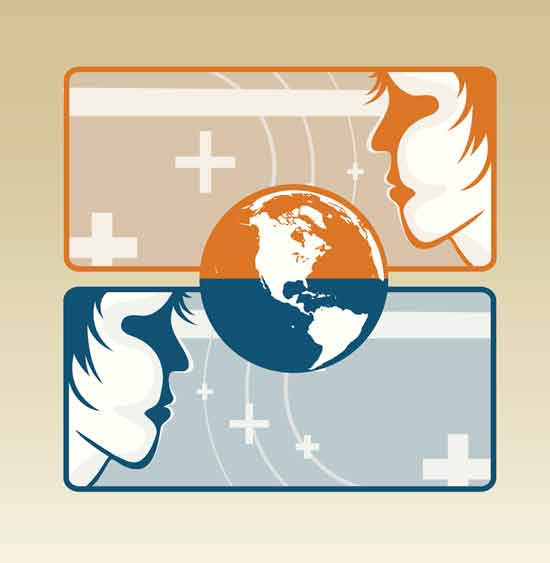Good communication is key to the success of any organization. But what happens when communication barriers arise? Whether it’s language barriers, cultural differences, or emotional roadblocks, these barriers can inhibit the flow of information and cause misunderstandings. In this article, we’ll explore common communication barriers and how to overcome them for a more effective organizational structure.
Breaking Down Barriers: Understanding the Types of Communication
It is important to understand the different types of communication before attempting to overcome communication barriers. There is verbal and non-verbal communication, formal and informal communication, and multiple mediums through which information can be transferred, such as face-to-face, phone, or email. Each type of communication has its own set of barriers that can impede the flow of information.
10 Ways to Overcome Workplace Communication Barriers
- Understand the different types of communication: Before attempting to overcome communication barriers, it is important to understand the different types of communication and the barriers that can impede the flow of information.
- Practice active listening: Active listening is an essential skill in overcoming communication barriers. It involves paying full attention to the speaker and understanding their message, rather than just hearing the words they’re saying.
- Evaluate the organizational structure: The organizational structure of a company can also acts as a barrier to effective communication. Consider if a hierarchical structure is impeding communication and if a flatter structure would improve transparency and understanding.
- Break down physical barriers: Ensure that conversations take place in a location that allows the speaker to be easily heard and seen, and minimize background noise, distance, and physical impairments.
- Address psychological barriers: Psychological barriers can include the emotions and attitudes of both the sender and receiver. Create a relaxed and comfortable environment for conversations and be aware of the emotions and attitudes of everyone involved.
- Address language barriers: Use simple and clear language and avoid using jargon or technical terms that the receiver may not understand. If necessary, use a translator or interpreter to help bridge the language gap.
- Encourage open communication: Encourage an open and transparent communication culture where employees feel comfortable expressing their ideas and concerns.
- Use different mediums of communication: Utilize different mediums of communication like email, phone, face-to-face, video conferencing, etc. to reach different people and get the message across effectively.
- Provide training and development: Provide employees with training and development opportunities to improve their communication skills.
- Encourage diversity and cultural understanding: Promote diversity and cultural understanding within the workplace to help bridge cultural differences and improve communication among employees.
Active Listening: The Key to Overcoming Barriers
Active listening is an essential skill in overcoming communication barriers. It involves paying full attention to the speaker and understanding their message, rather than just hearing the words they’re saying. Active listening can help bridge language barriers, cultural differences, and emotional roadblocks. By actively listening, you can get a better understanding of the sender’s perspective and respond in a way that is more likely to be well-received.
Organizational Structure: A Barrier in Disguise
The organizational structure of a company can also act as a barrier to effective communication. This is particularly true for companies with a hierarchical structure where communication flows primarily from the top-down. This can create a lack of transparency and lead to information overload, making it difficult for employees to understand their role in the company and how their work contributes to the overall success of the organization.
Breaking Down Physical Barriers
The selection of a good location, which allows the speaker to be easily heard and seen, is critical. Physical barriers can include background noise, distance, and physical impairments. For instance, conversing in a loud and crowded room makes it difficult to comprehend the speaker. Such obstacles can prevent the sender and receiver from effectively communicating with one another.
Breaking Down Psychological Barriers
Psychological barriers to communication can include the emotions and attitudes of both the sender and receiver. For example, if the receiver is feeling anxious or stressed, they may have a harder time understanding and interpreting the message. However, by creating a relaxed and comfortable environment for conversations and being aware of the emotions and attitudes of everyone involved, these barriers can be overcome.
Breaking Down Language Barriers
Language barriers are perhaps the most common type of communication barrier. These can include a lack of fluency in a language, or the use of jargon or technical terms that the receiver is unfamiliar with. To overcome language barriers, it’s important to use simple and clear language, and to avoid using jargon or technical terms that the receiver may not understand. If necessary, use a translator or interpreter to help bridge the language gap.
A Story of Overcoming Communication Barriers
When I first started working in an international company, I quickly realized that there were many communication barriers to overcome. The biggest one was language. Many of my colleagues spoke English as a second language and I found it difficult to understand them at times. But I knew that in order to be an effective member of the team, I had to find a way to bridge the language barrier.
I started by actively listening to my colleagues, paying attention to the tone and inflection of their voice. I also tried to use simple and plain language when communicating with them. I also tried to understand their culture and to be sensitive to their customs and traditions,
I also tried to understand their culture and to be sensitive to their customs and traditions. This helped me to better understand their perspective and to communicate more effectively with them.
In addition to language barriers, I also encountered cultural barriers. There were times when my colleagues would use non-verbal cues that I didn’t understand. For example, in some cultures, it’s considered rude to make direct eye contact. I learned that by paying attention to non-verbal cues, I could better understand my colleagues and communicate more effectively with them.
Another barrier I encountered was emotional barriers. I found that some of my colleagues would become defensive when they felt that their ideas were being dismissed. I learned that by being empathetic and understanding their perspective, I could communicate more effectively with them.
Finally, I learned that by using active listening, being sensitive to cultural differences, and being empathetic, I was able to overcome the communication barriers I encountered. I learned that effective communication is not just about speaking and listening, but also about understanding and respecting the perspectives of others.
Conclusion
In conclusion, communication barriers can arise from a variety of sources, such as language, culture, emotions, and organizational structure. However, by understanding the types of communication and making use of active listening, empathy, and cultural sensitivity, we can overcome these barriers and achieve effective communication.
In today’s globalized world, it is essential for us to be able to communicate effectively with people from diverse backgrounds and cultures. By understanding and overcoming communication barriers, we can build stronger relationships and achieve greater success in our personal and professional lives.
FAQs
Common communication barriers include language barriers, cultural differences, emotional roadblocks, organizational structure, physical barriers, and psychological barriers.
Active listening involves giving full attention to the speaker and comprehending their message, rather than just hearing the words they’re saying. Active listening can help overcome communication barriers. It helps bridge language barriers, cultural differences, and emotional roadblocks. It allows the listener to gain a better understanding of the sender’s perspective. This enables the listener to respond in a way that is more likely to be well-received.
By understanding different types of communication, actively listening, being aware of cultural and emotional differences, and knowing the company’s structure, you can improve communication. This can make it difficult for employees to understand their role in the company and how their work contributes to the overall success of the organization.
Physical barriers can be overcome by choosing a quiet and private location for conversations and ensuring that the speaker is in a position where they can be heard and seen clearly.
Psychological barriers can be overcome by creating a relaxed and comfortable environment for conversations and being aware of the emotions and attitudes of the sender and receiver. Understanding the emotions and attitudes of the sender and receiver can help to better understand their perspective and communicate more effectively with them.


